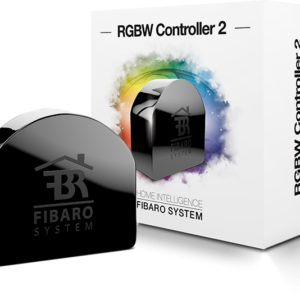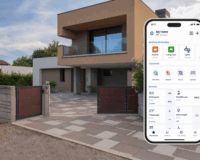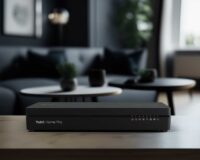The rapid advancement of technology has ushered in a new era of home automation, with voice-controlled smart homes leading the charge. The rise of voice assistants like Google Assistant, Amazon Alexa, and Apple Siri has revolutionized the way we interact with our living spaces. By offering hands-free control over various aspects of home automation, these voice-controlled systems are making it easier for homeowners to manage lighting, security, entertainment, and more. This article explores the impact of voice-controlled smart homes, their benefits, challenges, and future potential in creating a more connected and convenient living environment.
Table of Contents
ToggleThe Evolution of Voice-Controlled Technology
Early Beginnings
Voice-controlled technology has been around for decades, but it was not until the 2010s that it began to gain mainstream traction. Early voice recognition systems were often limited in scope and accuracy, with users needing to speak clearly and use specific commands. However, advancements in artificial intelligence (AI) and natural language processing (NLP) have significantly improved the capabilities of voice assistants, making them more accessible and user-friendly.
The Rise of Voice Assistants
The launch of Amazon’s Echo in 2014, powered by the Alexa voice assistant, marked a significant turning point in the development of voice-controlled technology. Amazon’s success with Alexa prompted other tech giants to enter the market, with Google launching Google Home and Apple introducing HomePod. These voice assistants quickly became central to the smart home ecosystem, offering users the ability to control a wide range of devices and services through simple voice commands.
Integration with Smart Home Devices
The integration of voice assistants with smart home devices has been a game-changer for home automation. Voice-controlled smart homes leverage the power of AI to create a more intuitive and responsive living environment. By connecting voice assistants to various smart devices, such as lighting, thermostats, security cameras, and entertainment systems, homeowners can achieve a higher level of convenience and control.
Benefits of Voice-Controlled Smart Homes

1. Seamless Control
Voice-controlled smart homes offer unparalleled convenience by allowing users to manage their home automation systems without needing to physically interact with devices or apps. A simple voice command can adjust the lighting, set the thermostat, lock the doors, or play music. This hands-free control is especially beneficial for individuals with mobility impairments or those carrying items.
2. Enhanced Accessibility
Voice assistants provide an accessible solution for individuals with disabilities or impairments. For example, voice commands can help those with visual impairments control smart devices and access information without needing to navigate screens. Additionally, voice-controlled systems can be customized to accommodate different languages and dialects, making them more inclusive.
3. Improved Efficiency
By integrating voice assistants with smart home devices, homeowners can streamline their daily routines and improve efficiency. Voice-controlled systems can automate repetitive tasks, such as turning off lights when leaving the house or adjusting the thermostat based on weather conditions. This automation helps reduce energy consumption and enhances overall home efficiency.
4. Increased Security
Voice-controlled smart homes can enhance security by integrating with smart locks, cameras, and alarms. Homeowners can use voice commands to check the status of their security system, lock or unlock doors, and view live camera feeds. Additionally, voice assistants can be programmed to send alerts or notifications in case of suspicious activity, providing an added layer of protection.
5. Personalized Experience
Voice assistants can be personalized to suit individual preferences and needs. Users can create custom voice commands, set up routines, and adjust settings based on their habits and preferences. For example, a “Good Morning” routine could include turning on the lights, starting the coffee maker, and playing the daily news briefing. This level of personalization enhances the overall user experience and makes home automation more enjoyable.
Applications of Voice-Controlled Smart Homes

1. Lighting Control
Voice-controlled lighting systems allow homeowners to adjust the brightness, color, and ambiance of their lighting with simple voice commands. Users can create custom lighting scenes for different activities, such as reading, dining, or watching TV. Additionally, voice assistants can be programmed to turn lights on or off based on specific triggers, such as time of day or occupancy.
2. Climate Control
Voice assistants can manage smart thermostats and climate control systems, allowing users to set and adjust temperatures with voice commands. Homeowners can create custom temperature settings for different times of the day or control their HVAC system remotely. Voice-controlled climate control contributes to energy savings by optimizing heating and cooling based on real-time data.
3. Security and Surveillance
Voice-controlled smart home systems enhance security by integrating with smart locks, cameras, and alarm systems. Homeowners can use voice commands to check the status of their security system, lock or unlock doors, and view live camera feeds. Additionally, voice assistants can send alerts or notifications in case of security breaches, helping users stay informed and secure.
4. Entertainment Systems
Voice-controlled smart homes offer seamless integration with entertainment systems, including audio, video, and streaming services. Users can play music, adjust volume, switch channels, and control playback with voice commands. Voice assistants can also create custom entertainment scenarios, such as “Movie Night” or “Party Mode,” to enhance the home entertainment experience.
5. Home Appliances
Voice assistants can control various home appliances, such as coffee makers, refrigerators, and ovens. Users can start or stop appliances, adjust settings, and receive notifications about their status. For example, a voice command could start the dishwasher or set a timer for the oven, adding convenience to daily tasks.
6. Routine Management
Voice-controlled smart homes allow users to create and manage daily routines, such as setting reminders, scheduling appointments, and making shopping lists. Voice assistants can provide reminders for tasks like taking medication, paying bills, or picking up groceries. This integration helps users stay organized and manage their time more effectively.
Challenges and Considerations

1. Privacy Concerns
One of the primary concerns with voice-controlled smart homes is privacy. Voice assistants are always listening for commands, which raises questions about data security and potential misuse of personal information. Users should be aware of how their data is collected, stored, and used by voice assistants and take steps to protect their privacy.
2. Voice Recognition Accuracy
While voice assistants have made significant advancements in speech recognition, they are not infallible. Accurately interpreting voice commands can be challenging, particularly in noisy environments or with diverse accents. Users may occasionally encounter issues with voice recognition accuracy, which can impact the reliability of the system.
3. Integration with Existing Systems
Integrating voice assistants with existing smart home systems and devices can sometimes be challenging. Compatibility issues may arise when connecting devices from different manufacturers or when using outdated technology. Homeowners should ensure that their smart devices are compatible with their chosen voice assistant and consider upgrading outdated systems if needed.
4. Dependence on Internet Connectivity
Voice-controlled smart homes rely on internet connectivity to function effectively. A stable and reliable internet connection is essential for voice assistants to process commands and communicate with smart devices. Homeowners should ensure they have a robust internet connection and consider backup solutions in case of connectivity issues.
5. Cost Considerations
Implementing a voice-controlled smart home system can involve costs for purchasing smart devices, voice assistants, and potential installation services. Homeowners should carefully consider their budget and evaluate the cost-benefit ratio of investing in voice-controlled technology. While the convenience and benefits may outweigh the initial costs, it is essential to plan accordingly.
Future Trends and Innovations
1. Enhanced AI and NLP
Future advancements in artificial intelligence (AI) and natural language processing (NLP) will continue to improve the capabilities of voice assistants. AI will enable more accurate voice recognition, better contextual understanding, and more personalized interactions. This progress will enhance the user experience and make voice-controlled smart homes even more intuitive and responsive.
2. Increased Integration with IoT
The integration of voice assistants with the Internet of Things (IoT) will expand the range of devices and services that can be controlled through voice commands. As more devices become IoT-enabled, voice-controlled smart homes will offer even greater convenience and control. This integration will also facilitate more complex and customized automation scenarios.
3. Voice Biometrics and Security
Voice biometrics, which uses voice patterns to authenticate users, will play a significant role in enhancing the security of voice-controlled smart homes. By implementing voice recognition technology, voice assistants can provide personalized access and prevent unauthorized users from controlling smart devices. This added layer of security will address privacy concerns and protect sensitive information.
4. Multi-Language and Multi-Dialect Support
As voice-controlled technology becomes more global, there will be increased support for multiple languages and dialects. Voice assistants will become more adept at understanding and responding to diverse linguistic and cultural contexts. This evolution will make voice-controlled smart homes more accessible to a broader range of users around the world.
5. Seamless Device Integration
Future developments will focus on improving the integration of voice assistants with a wide range of smart devices and systems. Enhanced interoperability will allow for more seamless control and automation, making it easier for homeowners to create customized and cohesive smart home environments.
Conclusion
Voice-controlled smart homes are transforming the way we interact with our living spaces, offering a new level of convenience, accessibility, and efficiency. The rise of voice assistants like Google Assistant, Amazon Alexa, and Apple Siri has paved the way for seamless control over lighting, security, entertainment, and more. While there are challenges and considerations to address, the benefits of voice-controlled technology are clear. As advancements continue to shape the future of home automation, voice-controlled smart homes will become an increasingly integral part of our everyday lives, making our homes smarter, more connected, and more responsive to our needs.












